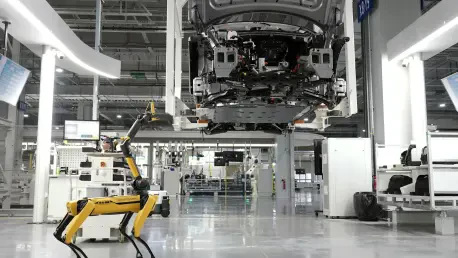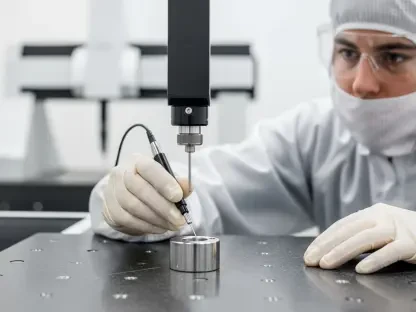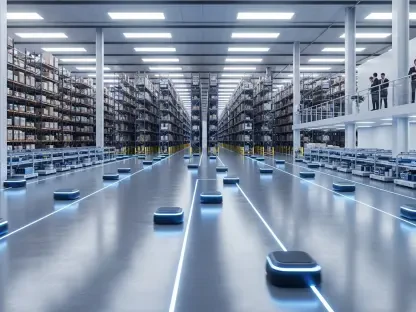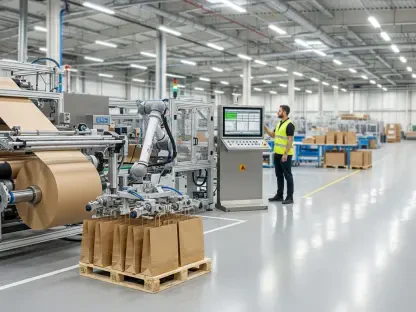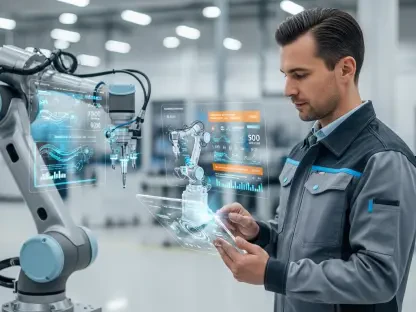In a world where critical industries like aerospace and defense grind to a halt over delayed prototypes, the manufacturing sector stands at a breaking point, facing systemic failures that cost billions in missed opportunities and threaten national security. Picture an urgent defense project stalled for months, not due to a lack of innovation, but because a single component couldn’t be sourced or produced on time. This isn’t a rare glitch—it’s a widespread issue. The urgency to transform how goods are made has never been clearer, and one company, Isembard, is stepping up with a radical solution: smart factories that promise to shrink production timelines from weeks to days.
The stakes couldn’t be higher. As global competition intensifies and supply chains grow increasingly fragile, the inability to deliver high-quality parts swiftly undermines progress across multiple sectors. From energy to infrastructure, the ripple effects of these delays are felt everywhere. This story dives into why manufacturing is in desperate need of an overhaul and how Isembard’s innovative approach—combining cutting-edge software, robotics, and a collaborative mindset—could redefine the industry’s future.
Why Manufacturing Needs a Radical Overhaul Now
Delays in manufacturing have become a silent crisis, with prototypes and parts often taking weeks or months to reach completion. Industries such as aerospace and defense, which rely on precision and speed, are hit hardest, facing setbacks that jeopardize critical projects. A recent study highlighted that over 60% of defense contractors reported significant delays in 2025, directly impacting national readiness and innovation timelines.
Beyond immediate project halts, these inefficiencies carry hidden costs. Stalled production lines mean lost revenue, frustrated clients, and diminished trust in domestic manufacturing capabilities. The urgency to address this issue extends beyond individual companies—it’s a matter of economic stability and global competitiveness, pushing the industry to rethink outdated practices.
Moreover, the fast-paced nature of today’s world demands agility that current systems simply can’t provide. With technological advancements accelerating, the gap between what’s possible and what’s delivered continues to widen. This disconnect underscores a pressing need for transformation, setting the stage for bold solutions to tackle deep-rooted challenges head-on.
The Broken Backbone of Modern Manufacturing
At the core of the industry’s struggles lies a fractured system where outdated production software fails to sync with administrative tools. This disconnect creates bottlenecks, leaving machinists and managers scrambling to bridge gaps manually. The result is a frustrating cycle of errors and delays that no amount of overtime can fully resolve.
Compounding the issue is an over-reliance on distant suppliers, often located halfway across the globe. When a single link in this far-flung chain falters, entire projects grind to a halt, exposing the fragility of globalized supply networks. Local machine shops, caught in a feast-or-famine loop of inconsistent contracts, bear the brunt, often unable to invest in modernization due to unpredictable workloads.
Adding to the strain is the looming retirement of skilled machinists, a workforce that holds irreplaceable expertise. As this generation exits, the industry faces a knowledge gap that automation alone cannot fill. These combined flaws—technological, logistical, and human—form a perfect storm of inefficiency, demanding a fundamental shift in how manufacturing operates.
Isembard’s Vision: Smart Factories as the Game-Changer
Isembard emerges as a disruptor with a clear mission: to rebuild manufacturing through smart factories powered by innovation. Their proprietary MasonOS software integrates seamlessly with robotics and CNC machines, slashing production times dramatically from weeks to just days. This technology isn’t a distant dream—it’s already operational at four sites across the UK and US, with plans to expand to over 100 locations in the coming years.
What sets this model apart is its modularity and focus on real-time adaptability. By embedding software developers directly on the factory floor, solutions are crafted with practical input, ensuring tools address actual production challenges. Additionally, their goal to reduce machinists’ administrative workload from 50% to a mere 10% frees skilled workers to focus on craftsmanship rather than paperwork.
This approach isn’t just about speed; it’s about redefining efficiency. Modular factory systems allow for scalability, adapting to diverse manufacturing needs while maintaining precision. As Isembard scales, the vision is to create a network of agile, tech-driven hubs that can respond to industry demands with unprecedented flexibility, potentially transforming how goods are made globally.
Voices from the Frontline: Insights and Impact
Insights from Isembard’s leadership paint a compelling picture of an industry ready for change. General Manager Justin Baucum notes a widespread hunger for streamlined processes, stating, “Manufacturers are desperate for technology that integrates smartly without disrupting the shop floor.” His perspective reflects a shared frustration with current inefficiencies and a collective desire for practical innovation.
Behind the scenes, a lean team of 20 to 30 drives operations at existing sites, showcasing how a small but focused workforce can achieve outsized impact with the right tools. This efficiency hints at the scalability of the model, where technology amplifies human effort rather than replacing it. The numbers speak to a deliberate, grounded approach amid ambitious expansion plans.
Consider the story of a machinist who once spent half the day tangled in paperwork and platform management. Now, supported by intuitive software, the same worker dedicates nearly all their time to precision work, rediscovering the satisfaction of the craft. Such human-centered outcomes highlight how Isembard’s innovations resonate beyond mere metrics, touching lives on the factory floor with tangible improvements.
Building a Collaborative Future: Practical Steps for Transformation
Isembard’s blueprint for change offers actionable strategies that others in the industry can emulate. Their phased software rollout begins with inventory management, ensuring immediate improvements in tracking and resource allocation. Subsequent expansions into supplier coordination and quoting aim to eliminate inefficiencies step by step, creating a unified operational flow.
Central to this vision is a “better together” philosophy that prioritizes collaboration over competition. By forming partnerships with local machine shops through franchises or affiliations, Isembard provides a lifeline to businesses struggling to modernize independently. This network approach fosters consistent demand, stabilizing workloads for smaller players while enhancing overall industry resilience.
For stakeholders and industry insiders, the path forward involves advocating for or adopting similar tech-driven, cooperative models. Embracing partnerships and investing in scalable software solutions can position manufacturers to thrive in a rapidly evolving landscape. The focus must be on building ecosystems where innovation and collaboration drive progress, ensuring no shop or worker is left behind in the push toward efficiency.
Closing Thoughts
Reflecting on the journey through manufacturing’s challenges, it becomes evident that systemic flaws have long hindered progress, from delayed prototypes to overburdened machinists. Isembard’s bold strides with smart factories offer a glimpse of what is possible when technology and collaboration converge. Their efforts redefine speed and efficiency, proving that transformation is within reach.
Looking back, the impact of reducing administrative burdens and fostering partnerships stands out as a turning point. The next steps center on scaling these innovations, encouraging broader adoption of modular systems and integrated software across the sector. Industry players are urged to explore collaborative networks, ensuring that even the smallest shops can access tools for modernization.
Ultimately, the legacy of this overhaul points toward sustained investment in smart technology and shared growth. Stakeholders are challenged to champion these solutions, driving a collective effort to rebuild manufacturing into a responsive, resilient force. The foundation laid by such initiatives promises a future where delays become relics of the past, replaced by agility and innovation.
